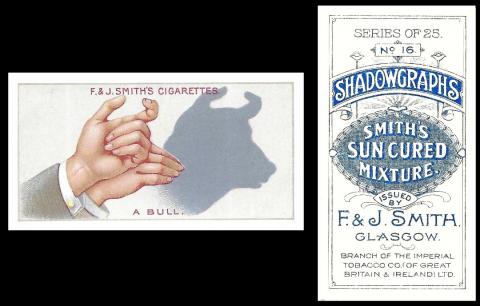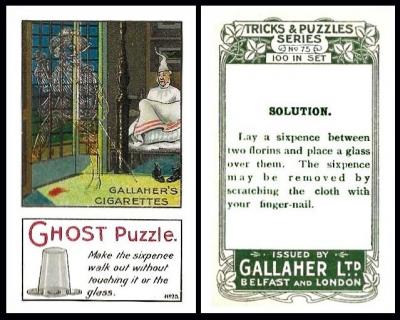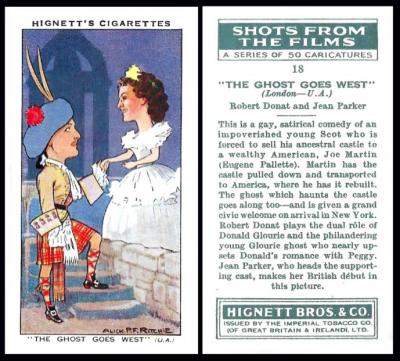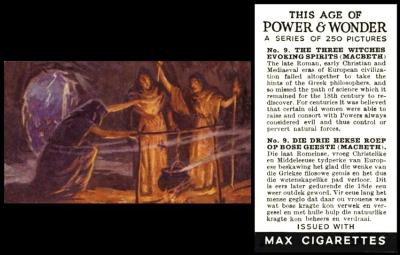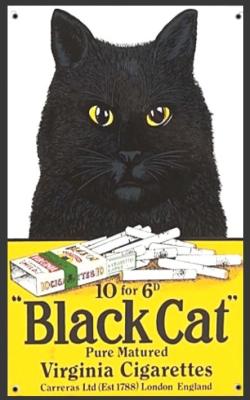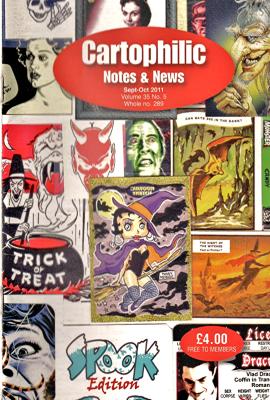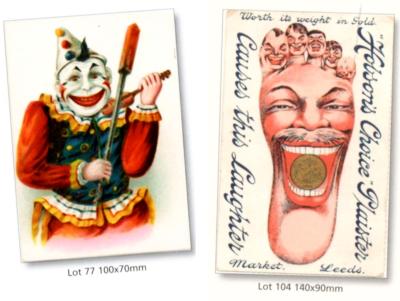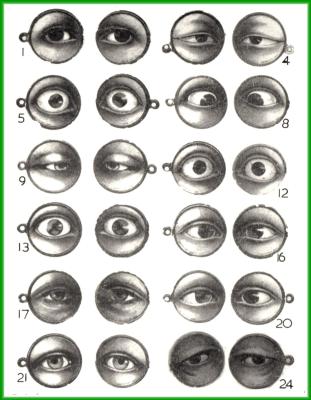An annually updated bewitching brew of spookiness, as discovered amidst the wonders of our web, which takes you deep down into the darkest recesses of our hobby.
Samhain Spectres :
Just to set the scene, lets go back to the days of the ancient Celts, who celebrated a festival called Samhain. Their belief was that on this night the barrier between the land of the spirits and the land of the living was at its thinnest, and that if the spectres poked it with their long bony fingers they could part the veil and come on through. The festival was on November 1st, but the celebrations and scary stories would actually start on the day before, October 31st, and this remains the day we celebrate Hallowe`en today.
Actually the time was well chosen, for it was often a time when the harvest - and the summer - was all over, and the long dark winter starting to begin. This was easy to spot, with the change in the weather, the sudden revealing of the spiders webs twinkling in the early morning dew and frost, and the way that our fluffy and friendly trees turn into skeletons, their leaf-less branches scraping at the glass of our windows, accompanied by the moaning of the winds.
Was that why, suddenly, in these darkened evenings, at the dawn of civilisation, there became a need for illumination. To early peoples, huddling in their caves, this was fire - and it was probably not that long before someone realised that they could make shapes against the wall by blocking the light from that fire. That was the origin of this age old game, which F. & J. Smith called "Shadowgraphs" in our pictured set from 1915. There are other sets on this theme too - W. Duke & Sons` American issued "Shadows", dating from 1889, and B. Morris, who brought a certain extra finesse to the idea in 1925 by suggesting with their set, also called "Shadowgraphs", that cardboard cut out "props" be used as well.
When nobody could think of a new shape to produce, but there was still a long night ahead with little else to do, those gathered would often tell stories with a slightly macabre twist.
So here we have a ghost puzzle, courtesy of Gallaher Ltd`s "Tricks and Puzzles"
From early times the ghost was featured in literature, either as a spooky mist, or as a person with shape but no substance. Homer used them in "The Odyssey", and also spoke of going to find them in the Underworld, and they also feature in the Bible - however the earliest mention ever is in a play called Mostellaria, which can be translated as "The Haunted House", and, what`s more, the author, the Roman Plautus, born in 254 BC, was honest enough to admit he based the idea on an even earlier play.
The first film ghost was created by Georges Melies, in 1896, for a film called "Le Manoir du Diable". This translated to `The House of the Devil` but that was a bit much for the United Kingdom, and they called it "The Haunted Castle". Though the Devil did appear on cards, and here he is, portrayed by the great Sir Henry Irving on Player`s "Actors and Actresses", issued just two years after, in 1898 - and he also appears as Mephistopheles on another of their sets, issued in 1916, called "Players Past and Present"
I have yet to find a card of George Melies, but we do have a card of Jules Verne`s Moon Shell because the author freely admitted he had based much of his work on the French film-maker`s. Our card here shows a much later ghost, as played by the dashing, and kilted, Robert Donat in a 1935 film called "The Ghost Goes West", and shown here on a card by Hignett Bros. from the set "Shots From the Films". It was also issued by Ogdens, the same year.
Trick, or Treat ?
This started much earlier than you believe, with little bands of people touring a town in costume, going door to door, and offering to sing a song to appease the dead in exchange for money or for food. When Irish emigrants reached America they brought this tradition with them, which is why the Hallowe`en traditions are so strong over there. In Ireland they had carved their curious head-shaped Hallowe`en lanterns out of turnips, but that a crop which was not so readily available in America. We have no record of whom, but someone saw the bright orange of a pumpkin and thought that would be an ideal substitute. As for Hallowe`en in Great Britain, it was not really heard of until American troops were stationed here during the Second World War, and they started to celebrate it in villages around their bases. This also reportedly led to pumpkins being grown by local farmers. However as far as I have been able to discover, outside of its long defended strongholds in Scotland and Ireland it did not really take off in this country until the 1980s. So are there any readers who can remember when it started in their part of England?
Witches and Wizards :
Now this card shows us the three witches from the play "Macbeth", written by William Shakespeare in about 1602-07, which he said was based on a book he read, written in 1587. However many think their true origin was far further back, and that they were the Three Fates of Greek mythology. Our set "This Age of Power and Wonder" was issued in South Africa by A. & M. Wix, hence the bi-lingual back, in Afrikaans and English. .
Cats and Creatures :
Speaking of witches, we move to their familiar, the cat. This connection comes from the Celts as well, for they believed cats were the spirits of the cursed, or of wrongdoers, condemned never to settle, to wander round the streets for ever, all alone, unless they were enslaved by witches and made to accompany them on their adventures.
We do not really know why black cats have this connection, but it is possibly because of the fact that when we see them at night we can only see their eyes. This is very clear on our enamel sign, for Carreras Limited, makers of Black Cat Cigarettes, whose cards even bore the head of this feisty feline, modelled on a real feline a stray who kept sneaking into the warm window of Senor Carreras` tobacco shop, so much so that the premises became known as the shop with the black cat. There is a happy ending too, because he adopted the cat in real life too, not just on his packaging.
Other Oddities :
The first ever Hallowe`en cover of the Cartophilic Notes and News magazine was this one - which shockingly slid out of plain white envelopes some time in October 2011..... and I must give many thanks indeed to the editor of this issue, Mr. J. Devaney, who has most graciously allowed me to “cannibal-eyes” the work this issue, for he was the editor of our magazine before he breathed of new life into the former “Card Times”, creating a wonderful new world called The Card Scene
Some time we will show you more of that issue, but here are two more "delights" from the postal auction ...
At first I thought the foot had a hole in it where you inserted your finger and made it look like its tongue was sticking out, but it turns out to just be a golden sovereign. Phew ! This card was produced by Hobson Trimble & Co, and the "Market" was Market Street, Leeds. You can see a newer packet of their plaisters at the National Trust website/Hobson and some more early advertising at Old Shop Stuff/Hobson.
This Fry Eye appeared in another of our auctions a while ago - however this was not a new idea as in America, Kinney Bros had issued similar round eyes in 1889, known as "Jocular Oculars" - a very grandiose way of saying "humorous eyes", with added rhyme.
The Kinney version was featured in The Cartophilic World magazine Volume 15, No.164, for March April 1963, where the text reads:
"Kinney "Jocular Oculars". This shaped set of rather curious design has baffled the research team for some time but thanks to help from Messrs, Burdick and Bray we have at last produced the illustration at (816) which covers the 24 subjects known, paired up in the way we believe the designers intended. The cards are recorded under set K32-11 in the World Index, or USA/221, and backs are found with the indications "Twenty-Four" or "Twenty-Five" in the series, the latter including changes in the wording of the text so that it is clear that two printings were made, not merely a change in the number in set. The pair at Nos 15-16 have pupils in blue, while the very similar pair at Nos. 19-20 have pupils in brown. This difference cannot of course show up in the illustration. There may be an odd "ocular" to be found, but I rather think that only 24 were issued and the printing inscribed "Twenty-Five" on the back was an error by the compilers.
And finally, before we close our crypt, here are a few other links we found when we rattled our chain.....
Bela Lugosi - https://csgb.co.uk/publications/newsletter/2021-10-15 (on Wed.20th October)
Edgar Allan Poe - https://csgb.co.uk/news/spot-poe-etry-2021-10-31

